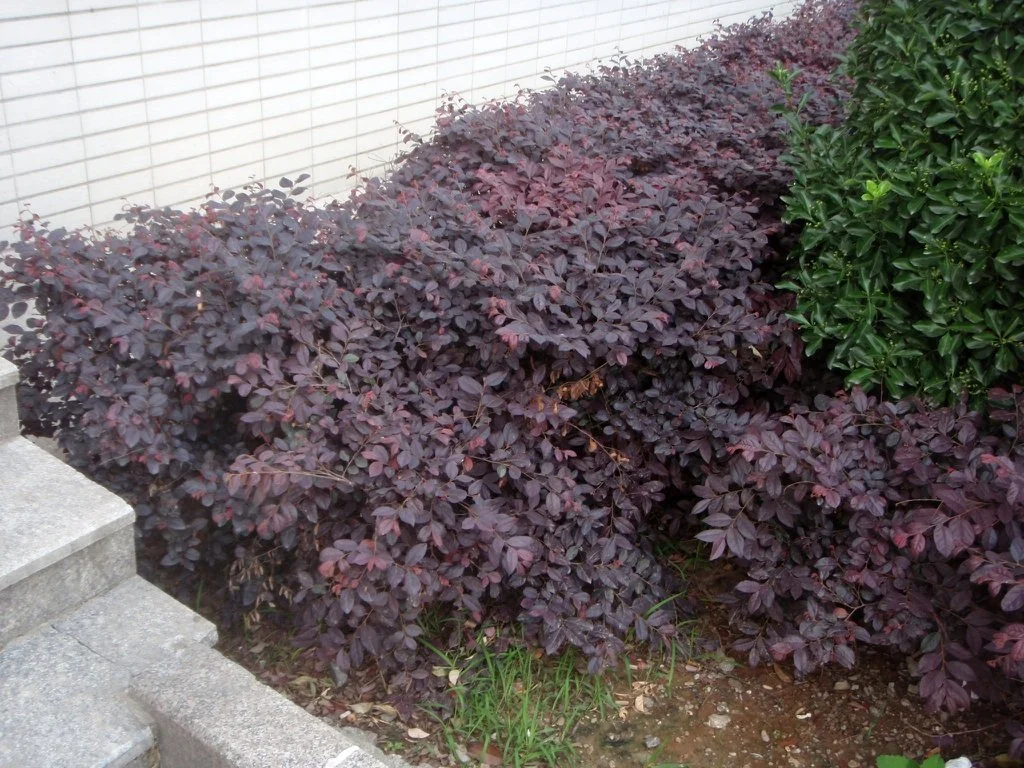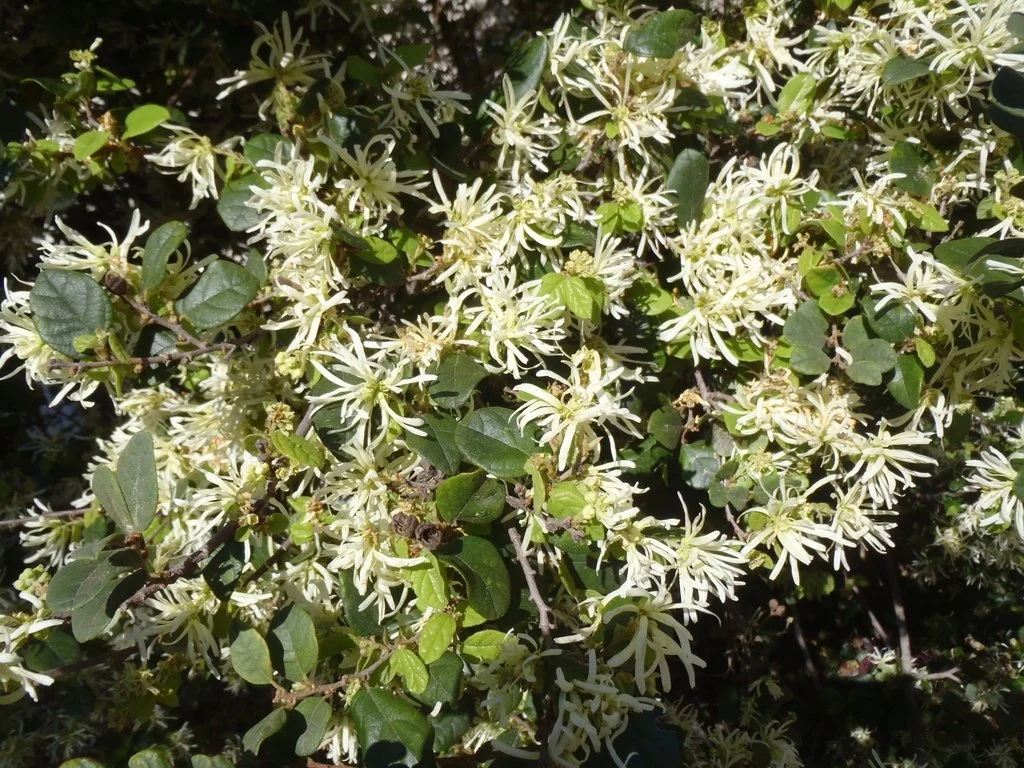Loropetalum, Chinese Fringe Flower (Loropetalum chinense)
Loropetalum, also called Chinese fringe flower, is a broad-leaved evergreen or semi-evergreen shrub or small tree of the witch hazel family. This low-maintenance shrub has a lovely rounded to vase-shaped, multi-stemmed habit with arching branches. It typically grows from 6- to 8-ft. tall and equally wide, but it may also reach 20-ft. tall or more. It is usually pruned as a shrub. Dwarf cultivars are popular for both their smaller size and for creating mass plantings, as these types can be planted more closely together than other cultivars.
The flowers bloom for 2 to 3 weeks in late March to April in clusters of lightly scented, spidery flowers. There are many cultivars available. The green-leafed, white-flowered variety has been available for a long time, but loropetalum was not generally known until the purple-leafed, pink-flowering forms were introduced in the late 1980s /early 1990s. Since then these plants, with their masses of early spring blooms, have become justifiably very popular.
Loropetalum chinense var. rubrum cultivar, spring, Durham County, NC | Carol Tierny | CC BY 4
The pink-flowering forms include 'Blush,' 'Burgundy,' 'Carolina Midnight,’ 'Ever Red,' Pizazz,' 'Plum De-light,' 'Plum Diamond,' 'Purple Pixie,' and 'Ruby.' The white-flowering forms include 'Carolina Moonlight' and 'Snow Muffin.' In full bloom, the many cultivars of the pink-flowering variety are showy eye-catchers. The white flowers of the species tend to be less visible against the leaves from a distance, but they are very attractive when viewed up close.
Loropetalum prefer full sun with some afternoon partial shade for the best flowering and leaf color. They grow best in rich, moist, well-drained, acidic soils. Loropetalum areintolerant of alkaline soils and may develop chlorosis.
Loropetalum respond well to a light application of slow-release fertilizer in early April and again in mid-May. Mulching the root area will protect the plant in the winter as well as help them retain moisture during summer.
This shrub is easily transplanted. Planted in the right location, loropetalum do not require pruning. However, they tolerate even heavy pruning very well. When necessary, prune in the spring after bloom in order not to reduce flowering the following spring.
This shrub is deer-resistant and, once established, drought-tolerant.
Loropetalum are attractive and versatile in the land-scape, having four-season interest. They can be used for borders, privacy screens, and foundations as well as a spec-imen, in mass, in small groups, and as an espalier. If limbed up, loropetalum can form a beautiful small tree.
This plant has no serious insect or disease issues. Root rot can occur in poorly drained soils. If the soil is neutral to alkaline, chlorosis may occur. Monitor for mites and aphids. Recently, a bacterial gall disease has been found on plants in South Carolina that can cause branch dieback and even-tual plant death. They may also be susceptible to powdery mildew and anthracnose.
VIDEO: Chinese fringe flower (Loropetalum chinense) - Plant Identification
Loropetalum chinense var. rubrum 'Blush' | Jim Robbins | CC BY-NC-ND 4.0
Loropetalum chinense var. rubrum | Jim Robbins | CC BY-NC-ND 4.0
Loropetalum chinense | Jim Robbins | CC BY-NC-ND 4.0
By Kathryn Copley, Extension Master Gardener℠ Volunteer, Brunswick County, NC
For more information on gardening in Brunswick County, please call the Brunswick County Cooperative Extension Office, 910.253.2610.
SOURCES:
Loropetalum chinense var. rubrum | North Carolina Extension Gardener Plant Toolbox
Loropetalum chinense | North Carolina Extension Gardener Plant Toolbox
Loropetalum (Chinese Fringe-Flower) Care, Cultivars & Growing Guide | Clemson University Cooperative Extension
Loropetalum | UF-IFAS Blogs, University of Florida




